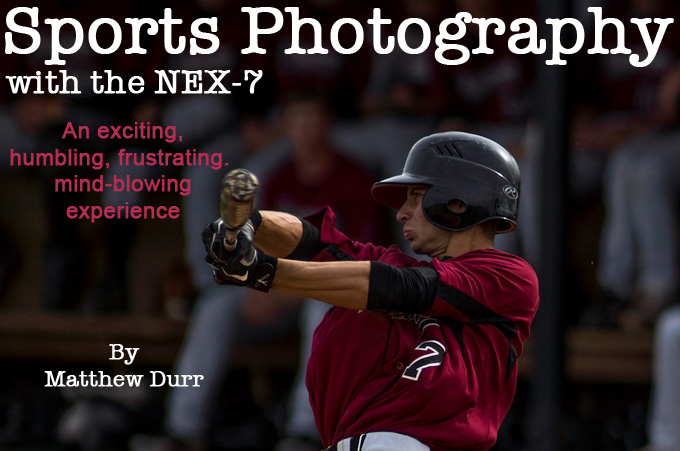
Sports Photography with the NEX-7:
An exciting, humbling, frustrating, mind-blowing experience.
By Matthew Durr – See his blog HERE
Just to get the formalities out-of-the-way, and to dispel or nail down any pre-conceived notions you may have of my experience, I am what you may call a retro-pioneer in the Sony NEX world. I first really started following Steve Huff’s site back when the first whisperings of the NEX-7 were abuzz, and have been checking back in ever since for all the neat stories, articles, and daily inspirations. Ever since I learned the confirmed specifications for the camera, I was interested in it for my first non-point-and-shoot camera purchase, my past cameras consisting of a borrowed Nikon d40 and d300, among various compacts I had around.
Soon after this, I learned how upon purchasing an adapter, mounting any lens ever made with full metering was possible. Then, I became truly fixated on the camera, as I previously only used manual focus lenses with the two Nikon bodies: a 50mm f/2 AI, and 80-200 AT-X (Tokina). However, using these on the NEX-7 wouldn’t really differentiate me from the crowd of the many that already use a multitude of legacy lenses on their NEX, so why would I call myself a retro pioneer? If the title of this article hasn’t already given it away, as far as I know I’m the only person that uses manual lenses in today’s world for…drum roll please…sports photography! My primary lenses now? The Nikon 300mm f/2.8 AI-s ED, and the Nikon 105mm f/1.8 AI-s, the whole small arsenal seen below in the poorly exposed cell-phone shot:
An air blower is a must for changing lenses so often to help ward off dust.
“Yeah, right, I call your bluff on this one…you can’t do sports with manual focus!” I can hear many people probably thinking this already. So, before I go into much more detail, here are just some pictures to refute that opinion:
So, how are these possible? Focusing on static subjects is easy, but how can I track a moving subject, let alone one who is running and sliding around full speed, without using the crazy fast sonic autofocus motors that drive most pro lenses today?
It’s simple. Practice, practice, practice (and peaking).
It may help to re-iterate that I already used manual focus lenses on a d300. This is a camera that has a very inaccurate single focus confirmation dot, rather than the precise 2 arrows and a dot of the upper-tier DSLRs. Focusing was always a challenge, as not only did I have to combat focus shift of my right eye seeing through the lens (where the eye makes a slightly out of focus image in focus), but even when the focus confirmation dot was lit up, I could still easily be well out of the critical focus range at large apertures.
Okay, so that means that these lenses would be even worse on the NEX-7, right? I’m looking through an EVF—essentially a tiny TV screen—to try to focus my images, and there is no focus confirmation dot, so how is this even doable? Well, besides the fact that the viewfinder image is quite large (with a 1.5 cm size and 1.09x magnification ratio), it provides live exposure feedback (will go into detail on that later), its refresh rate in normal light is real-time, AND that it is of a high 2.4MP resolution, it has focus peaking and magnification. For the uninitiated, focus peaking is a feature found in some of the more recent mirror-less cameras that outlines areas of contrast in real-time in a color of choice (for the NEX system, the choices are red, yellow, or white). Typically the areas of contrast, such as the edges of lettering on a player’s jersey, are indicative of areas that are in focus. Focus magnification, which should be viewed as an accompanying feature, simply zooms in the image wherever I choose to in real-time. On the NEX-7 I can select to see the image at 5.9x or 11.7x magnification, the latter of which each pixel in the EVF corresponds to a pixel on the sensor. Focusing with this method ensures very critically accurate focus—only if the player is relatively still. For the most part, focusing with mainly peaking is the only method I have time for, and generally speaking, is very accurate when used with the high-resolution EVF.
Seen here in a not-so-action-shot, the depth of field markings are outlined in yellow, as well as the edges of the lens, indicating general focus confirmation.
In practical use, by maintaining a colored outline on the players, focus is being tracked. With practice, tracking players moving perpendicular to the focal plane is possible (such as players running towards/from me), and snap-focusing from one point to the next becomes second nature—I just look for the color. Another trick that can help if I am having trouble finding the peaking color on the player is to watch the band of the depth of field move back and forth until it rests directly under the player, essentially zone focusing on the ground. Since I shoot in RAW, I also change the creative style to black and white. The RAW file is left…well…raw…while the peaking color stands out even more against the monochrome image.
Getting this shot was only possible due to following the line of the depth of field under the runner’s feet.
Then there is the live feedback display of the EVF. This is a feature I feel has not been lauded enough as a selling point for mirror-less cameras. When I have this turned on, what I see is what I get. Instead of an optical viewfinder, where no matter what setting I would change on the camera the view is the same, with the EVF, I always have a live depth of field preview, the overall exposure of the image, as well as what my white balance setting is compensating for. It should, however, be noted that in very low light, this becomes less accurate, as the frame rate of the EVF drops to compensate for the difference. In scenarios where there is a great deal of dynamic range, such as shadows under a tree on a sunny day, the shadows are usually quite crushed, and the highlights are usually blown. However, this rarely affects me in my shooting conditions, and this is an EVF-specific issue, as the actual picture, once taken, is unaffected.
So, let’s get onto the sub-heading of this article:
Why is this exciting?
For one, I am “going against the grain” in the modern rules of sports photography. I am being different, and getting results that seem mostly indistinguishable from shots taken with more robust cameras. There is also nothing more satisfying at a game than getting that shot, those one or two moments where I know I have a winner. Capturing such action shots with the challenge of manually controlling all the aspects of my camera, just like photographers did decades ago, is an amazing feeling. Doing so while saving a lot of money, as my 300mm cost me about a 1/10th of its younger autofocus brother, sweetens the deal even further.
Why is this humbling?
Choosing to go this route was a thought process that spanned over a significant timeframe, I pondered many other options with possible autofocus set-ups with Nikon DSLRs. I then realized that when using those tools, my equipment would determine everything for me: the focus, the metering, the entire exposure. Even if I shot in full manual, the camera would still do the autofocus for me, and, as mentioned above, trying to manually focus would be very difficult with only a confirmation dot in the lower corner. I decided that the limiting factor in getting the shot should be ME, NOT my tools. If a shot was blurred or exposed improperly, I was the one who wanted to be held accountable. Gordon Laing made a great point in a recent broadcasted Google+ hangout on using manual focus lenses that I absolutely agree with and speaks to the concept, “It’s actually quite liberating to shoot with old manual focus lenses…there’s none of this slowing down while [the lens] searches back and forth. You just take the picture, if it’s in focus or not, who cares?” I knew after starting out with the NEX-7, applying the lenses and camera this way would be humbling. I had a feeling that even with the peaking, I wouldn’t exactly have a high success rate at first, but…
Frustrating?
…I had no idea just how hard it would be to get consistent results. The first few games, I would fire off about 600 shots, and after some sorting in Lightroom 4, come out with about 50 or so keepers—less than 10%—that ranged from acceptable (pictures that were in focus but had little character) to great (those that embodied the action and spirit of the game). A few times, I doubted myself on my decision. Sure, the NEX-7 would still make a great general camera—which it definitely is—but I wondered if I had chosen the wrong path to get started with sports photography. There were so many shots I had captured that were just barely out of focus enough to render them unusable, and I was so mad at knowing that if I had just nailed focus, a truly amazing shot would have resulted, such as the picture taken below.
Funny enough, the focus point in this shot is actually the tennis ball, you may be able to see the softness in the player’s face.
Mind-blowing?
There is indeed a happy end to this. Keeping the fact out of the equation that my keeper rate has improved (and continues to do so) to about 40% over the course of only ten games, the amazement of how some of the select few pictures turned out is truly beyond me. In most situations, not only does the large effective apertures on my lenses isolate the subject from the background and keep the shutter speed very high, but it also enables me to stay in the sweet spot of the NEX-7’s sensor; the ISO range of 100 to 400. It is within these values that the amount of detail captured from the very high-resolution sensor can honestly make my jaw drop. In post, I can just keep zooming in and in on a picture with no loss in overall image detail, having the very real option to “shoot first, compose later”. In the right situations, specifically when critical focus is nailed and at ISO 100, the image at the pixel level is something to marvel at: standing 50 meters away from baseball and at 100%, making out distinct facial features is common.
Take this series for example:
Here’s the original:
Here’s the cropped final picture:
And here’s a 100% crop of his face:
Looking towards the future
So, what I’m getting at here, the NEX-7 is the ideal sports camera for the budget-minded enthusiast (if there is such a thing), right? Not at all. Any DSLR with a good, large aperture, autofocus lens can probably outperform me. If shooting conditions go south, and I have to pump up the ISO to get a decent shutter speed, it shows in my photographs. If it rains, I might as well forget about it, neither the camera nor lens is weather-sealed.
However, going through with this is an adventure, a lesson of sorts in patience and skill. I am forced to get intimate with the limitations of my gear, and to still work through mis-focusing, mis-exposing, and mis-composing to get the shot in the end. As a result of the times of hardship and struggle, when I eventually do get a DSLR with an autofocus lens, the experience I am gaining here and now should ensure I will be a much more effective photographer. Instead of worrying about camera settings and exposure, which will be second nature by then, my mind will be focused on composition and, of course, fast reflexes!

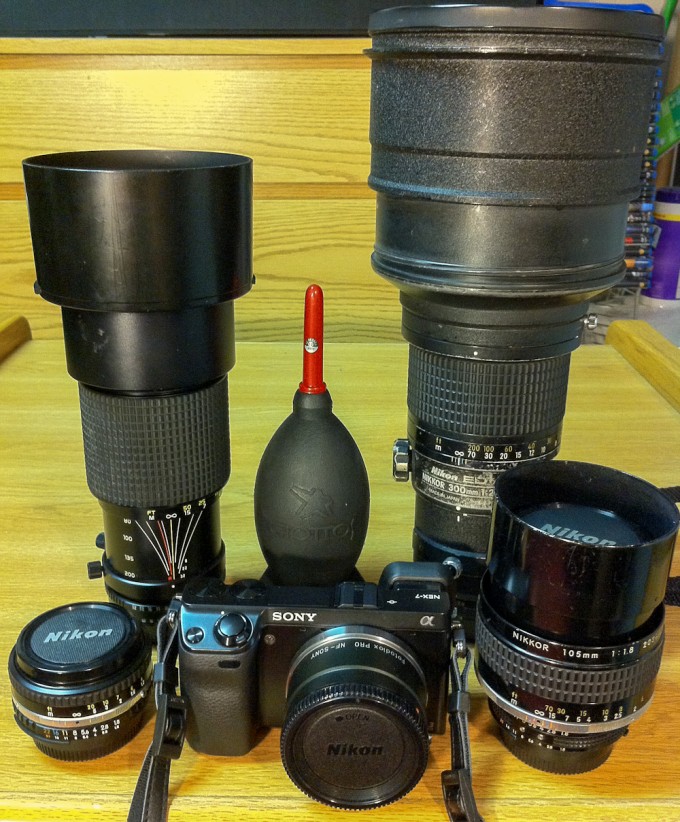
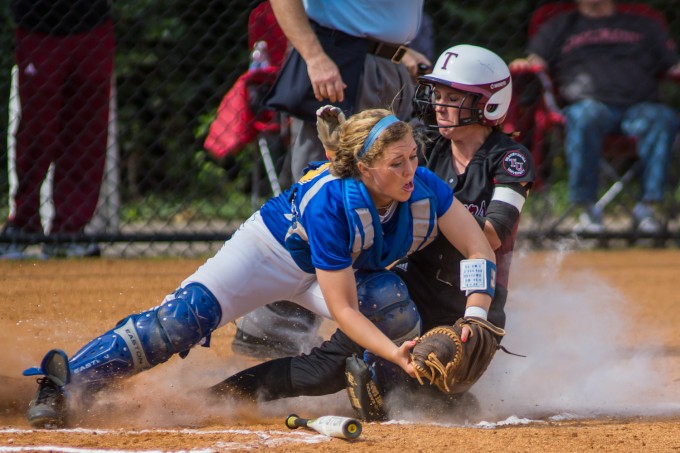
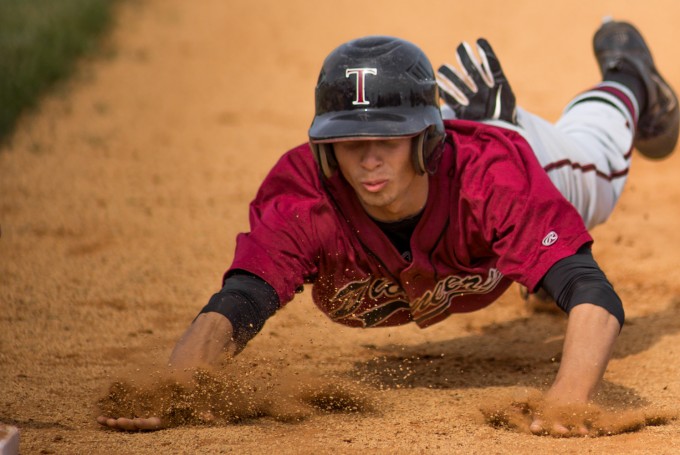
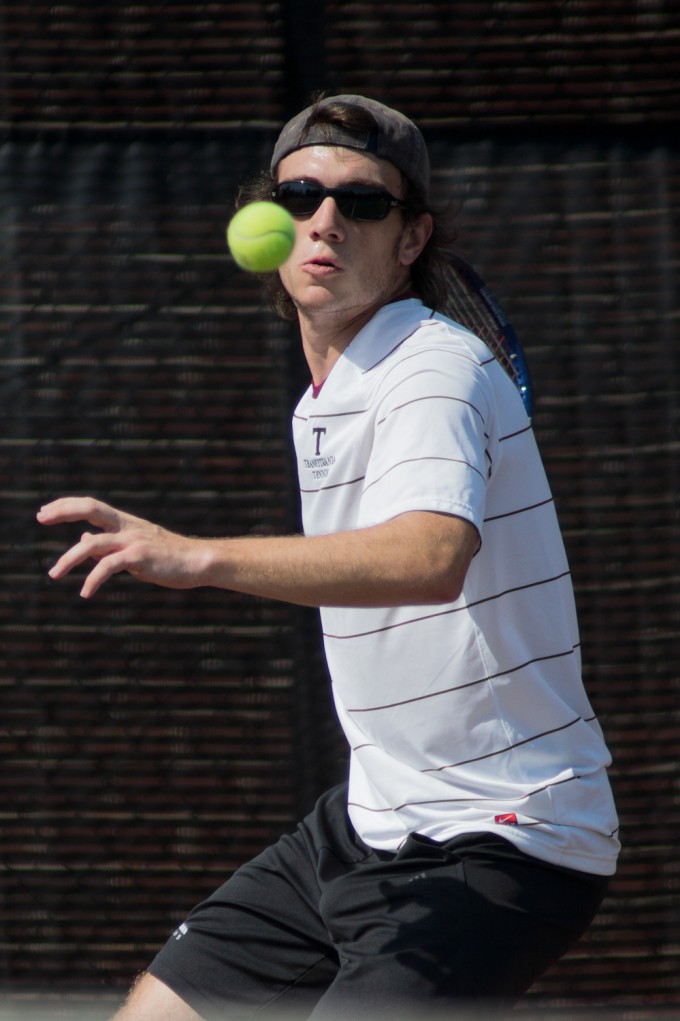
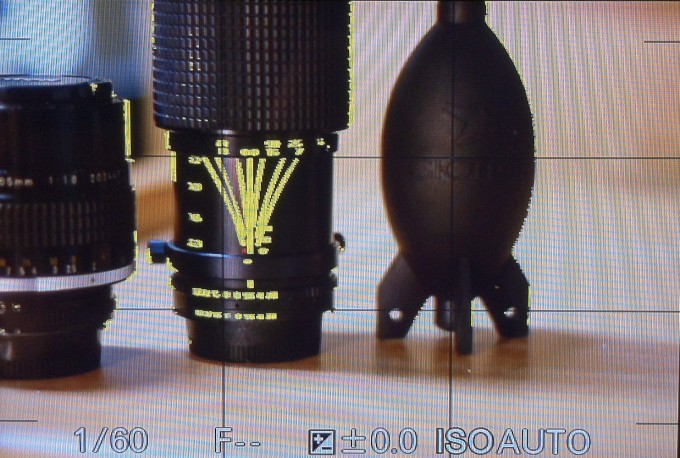
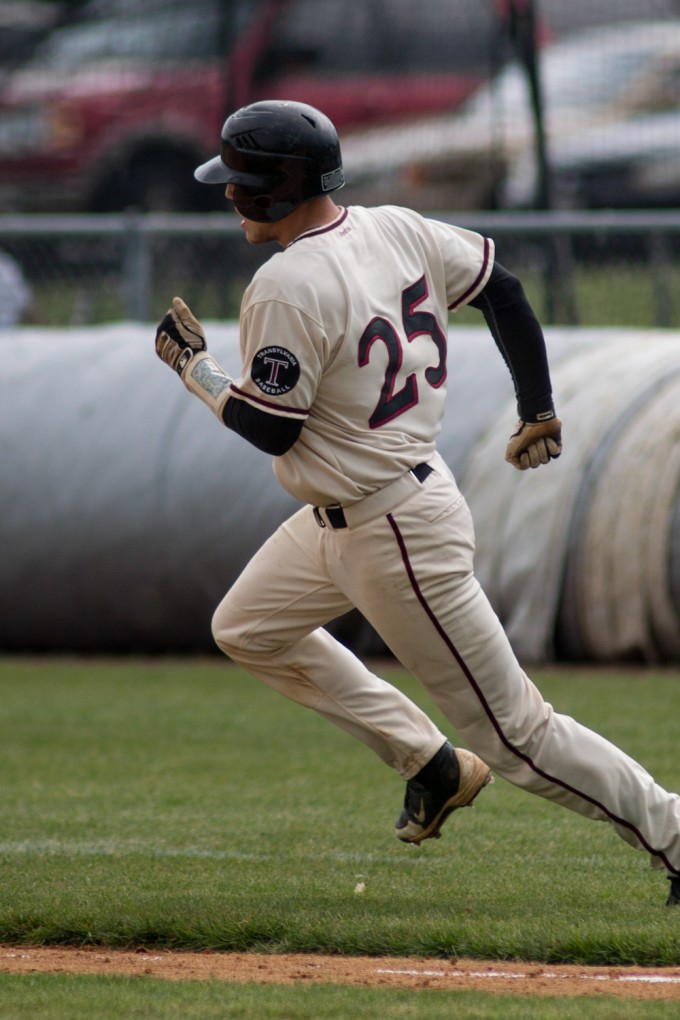
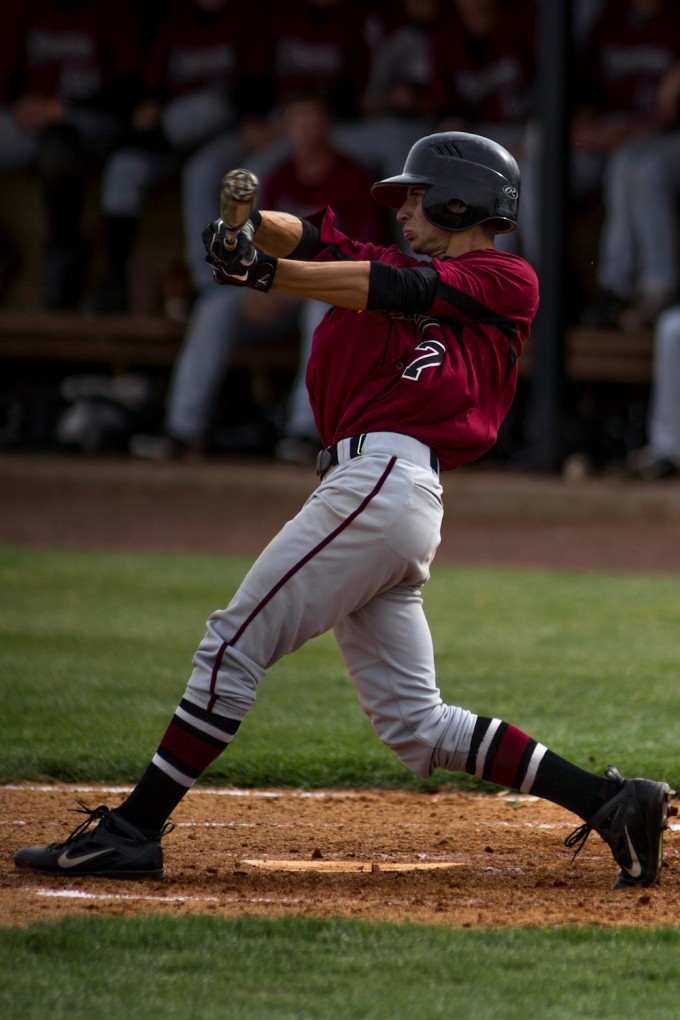
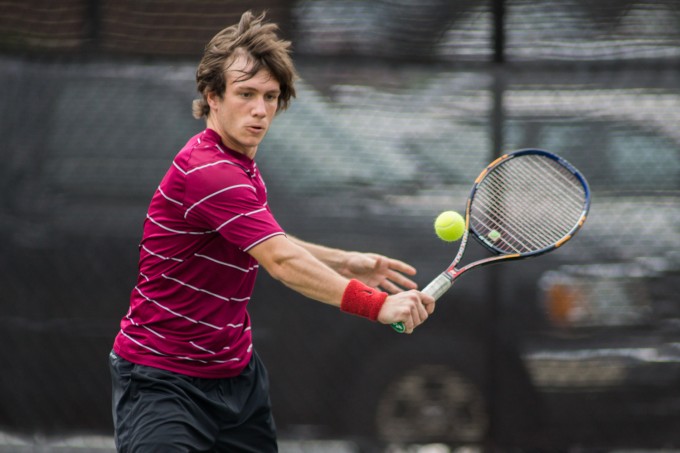
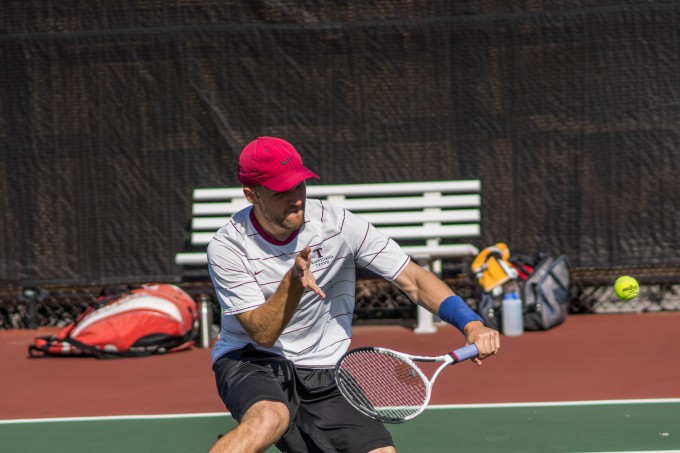
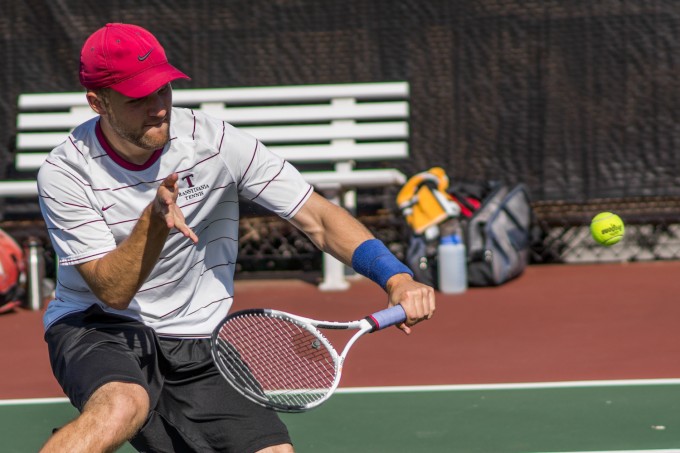
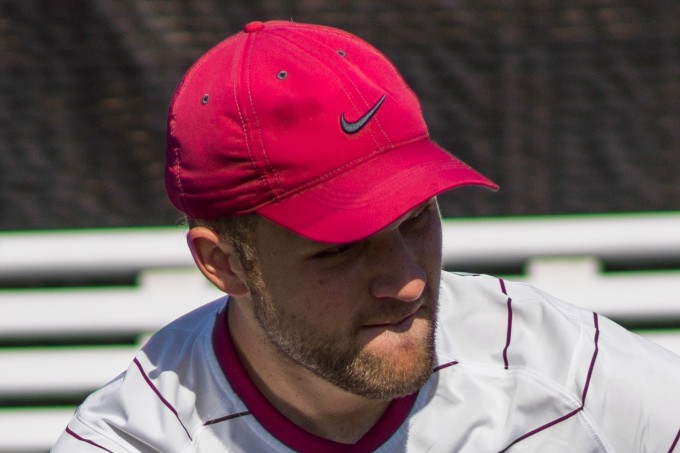
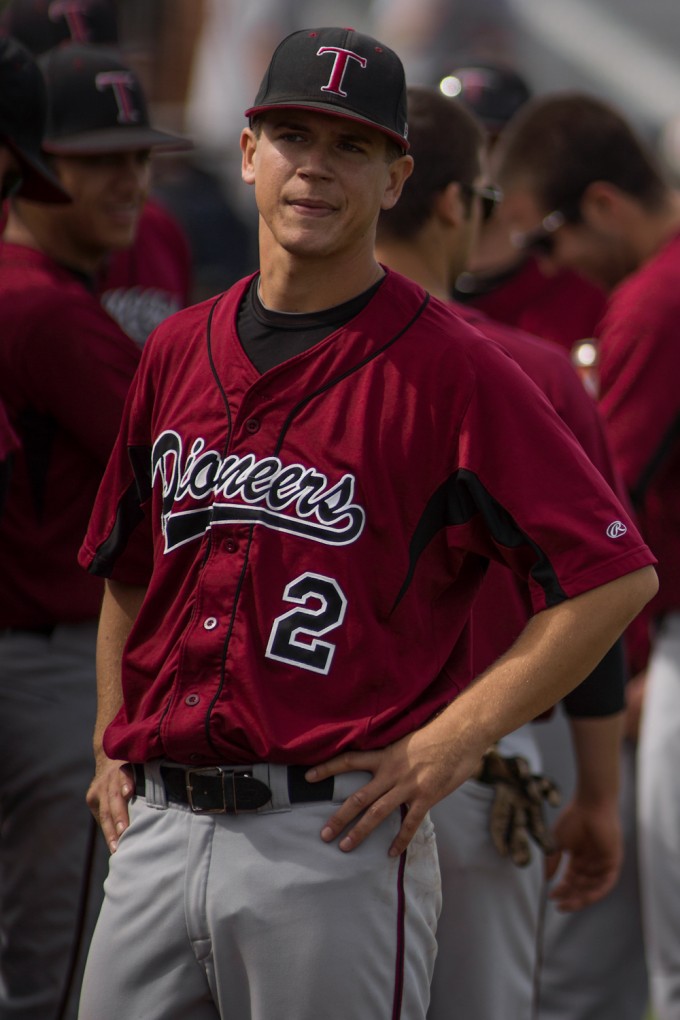
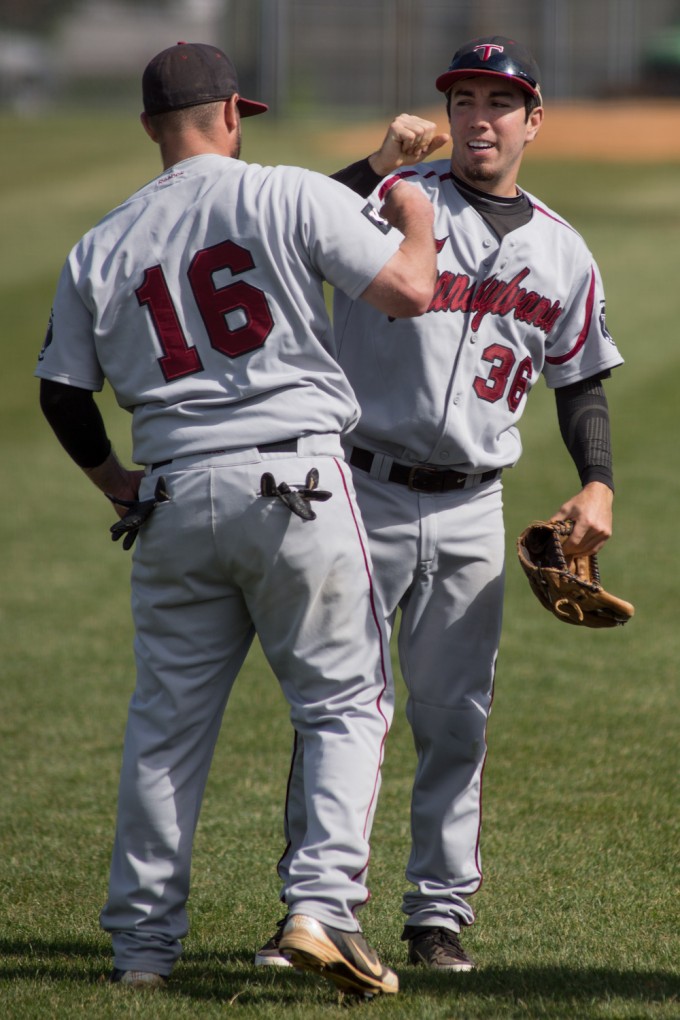


Hey Matt,
Great article, comments went a little haywire on here so I didn’t read all of them but I really enjoyed your post. I recently picked up the 300mm 2.8 ais ed and had been planning on using it mainly for wildlife but I may have the chance to shoot some college sports and was looking for some examples of this lens used in this area. The focus ring on that lens is amazingly smooth but so many people dog on manual lenses for anything that involves subject movement. I don’t have the cash to drop on the af version of the 300 2.8 so I decided to pick up the ais mf. I can’t wait to give it a try and improve my skills operating the focus ring. I know it will take more effort and even a little more luck with the mf lens but I think I will really appreciate the images that come with it! Thanks again for the article, it’s given me a good confidence boost!
Yeah Scott! I’m still using my trusty 300mm and my keeper rates constantly improve. I like the features the NEX-7 sports so much for action photography that I’m holding off on the A7/A7r for the time being. Investing in better manual glass for now (200mm f/2 and 400mm f/2.8, anyone?). It’s been a while since you posted your comment, but I hope your experience has been positive!
I am hoping for some help and advice. I have had a 300mm fd f5.6 lens and a 400mm nfd f4.5 lens and used both on my nex 7 and been really unimpressed unlike using the fd135mm f2.5 which is fantastic. Does anyone know how the canon 500mm f4.5 L lens will perform in comparison to the last two?..
Greetings Matthew; loved the post and I’d stumbled on it goggling for info on the NEX7 and manual lens use.
Would like to chat more, checkout my post on the subject of DSLM and manual lens.
Will checkout your blug.
Best
http://www.dpreview.com/articles/0625203518/nx10-update-samsung-steps-up-edging-to-own-mirrorless-camera-market-what-ive-learned
Hi,
stumbled across this interesting post searching for a good long lens for my Nex-7.
I have the Nex native 18-200mm zoom lens and am very happy with it but found it lacking in light and length when capturing distant moving motives.
What are my best options for a long & bright lense – f2.8 or better and 300mm or longer – and what camera functions would I loose compared to using a native lense?
Great article! Yes it may seem like voodoo witchcraft to the younger photogs “manual focus for sports WTH”! In the 80’s I was freelancing for the local paper and we shot day sports (baseball, track and field, soccer) and night sports (football) with the very same 300 2.8 you are using. Shorter Nikon glass usually consisted of 85 1.8 (Or 1.4 cant remember), Your 105, 180 2.8. Cameras were F3s, FM2s, F2s all with motors. Digital would have been a boon to the low light stuff (night football (basketball) under lights). We shot BW almost all the time and the soup de jour was tri-x pushed to 3200 in a solution of Ilford microphen mixed with an accelerator from photographers formulary (it was my concoction-I tested it and had the full timers try it and they were hooked!). Thanks for shedding light on the NEX 7s capability one more reason for me to get one! Thanks again!!
Glad you liked it, and interesting to hear your account (especially in attaining an ISO 3200 equivalent exposure!) from the past!
Interestingly enough, I have since sold the Tokina and found an oldie (but goodie) 180mm f/2.8 ED that you mentioned. It’s fantastic.
And I could go on and on how great the NEX-7 is (but I won’t bore you). You’re making a good choice Hootie. 😀
Thanks for the great article. Always nice to see experiences of people using equipment us mere mortals can afford. I think the majority of us do this as a hobby, and are not Lawyers and Hedge Fund managers who can drop 20 grand for a little leica camera and a couple of lenses, or a 10K dollar DSLR so it is nice to see when someone reminds us how good a result we can get from affordable lenses. Thanks again.
Exactly. Unless someone is a working pro for a contractor, I don’t see how someone can afford the new 200mm f/2’s, 300mm f/2.8’s, and even 400mm f/2.8’s. It’s impractical unless, like you say, they are rich.
Nice work. You will learn from this type of photography and be able to apply the techniques to other types as you expand.
In the 70’s and 80’s I did freelance work for a number of local newspapers in the the Washington DC area. Your basic methods are the same as had been used buy film photographers since the advent of the modern shutter/aperture camera. I learned from my father who was a photographer with the Library of Congress. For quick shooting to capture a moment we would select the lowest shutter speed for the available lighting and speed of the film, set the f-stop for the amount of depth of field we wanted and then preset the focus to include the area of interest. Now we also usually had a few cameras we different setups that we would grab(which hung off your neck) and shot with but by presetting we knew we had a very good chance of getting the shot when time came.
I have just bought am older Nex-5 to play with mainly just for manual lens. I see a huge advantage with video with this same setup. Also don’t let a high ISO scare you away from low light action shots. Remember the actual subject of the shot is always the most important part of the equation.
Just an example, is it better to have a shot of a golfer sinking the winning putt at dusk in a play-off even if there is a little noise or to not have the shot at all. I’ve sold many shots in the past that were not perfect but the subject was.
Enjoy sport shooting and yes if you get that one shoot and 1000 get thrown out, the one was worth.
Second to last paragraph, I’ll slowly start to warm up to cranking up the ISO. 🙂 I just hate seeing noise, since I work with my photos at the pixel level.
And on the last remark, that is my mantra exactly. Since all I need for each game is just one or two shots, the keeper rate is relatively irrelevant.
Please do a similar test for E-M5. I’m sure a lot are also interested if it’s usable for sports photog. TY!
I have no plans to get the EM-5 personally. However! Since that camera has focus peaking as well, it may perform alright with legacy lenses. The problem lies in getting subject separation due to the smaller sensor. Compared to a FF camera’s sensor, that same 300mm f/2.8 on the NEX has the DoF of f/4, while on the EM-5 (or any m4/3 camera), it will be f/5.6. The same light will get to the sensors regardless, but the Depth of Field advantages are lost.
To be exact you’ve got the DoF equivalent of a 450/4 on APS-C and 600/5.6 on m43 from a 300/2.8. The actual DoF separation is essentially the same as long as the lens and aperture are maintained (you’re just getting a crop out of the centre). It’s when you start matching Field of View that you run into the DoF isolation issue.
The thing is you need a 225mm f2 on m43 to give the same field of view and DoF as a 300/2.8 on APS-C. This is entirely doable, but not cheap (you have the option of the OM 250/2, the Nikkor 200/2 AI-S, the Leica Summicron-R 180 or the Zeiss APO-Tessar 200/2, only the OM or the Nikkor are even vaguely reasonably priced and both of those a a LOT more expensive than a Nikkor 300/2.8 AIS)
Apologies Adam, that’s what I was meaning. To match subject separation AND magnification, it’s a lot harder for m4/3 folk. I would love to have me one of those old 200mm f/2’s though. But man, even now they are in the $4k range.
Try writing less of “me”, “my lenses” and “my mind” next time.
Otherwise, quite interesting topic. I´d also like to see shots of the setup in use (tripod / monopd / head…).
I once tried using a 500mm lens on the NEX but it didnt work for me at all. Way too heavy and the livescreen jumped with every slightest touch of the lens.
22 instances of ‘my’ including one myself and one ‘my lenses’.
The man is writing in the first person about his experiences using his own equipment. His use of ‘my’ is entirely appropriate. More so than your comment.
He has gone back to almost grass roots and laid out his experiences and findings very well. He has also presented some excellent samples of his work.
As for your 500mm problem get the E-M5, the display is stabilised and you will only need a 250mm lens.
“His use of ‘my’ is entirely appropriate. More so than your comment.”
Have to disagree here. This article is first about himself, then about equipment. It should be the other way round. Who is Matthew Durr anyway? I dont care.
You aren’t obligated to care, that’s the joy of relative internet anonymity. Though you evidently do care enough to comment here. However, I cannot see how you didn’t notice how painfully obvious it was that I was writing a personal account (“An exciting, humbling, frustrating, mind-blowing EXPERIENCE.”). I didn’t want to write an article on gear, that is boring. I wanted to share what I had learned thus-far. Go to any other lens review site and you’ll get the boring technical data. If you haven’t already picked up on it; the articles on this site are a lot more “photographic”, and less “technical”.
Porstfan. Equipment is useless without a ‘me’ to drive it. Equipment owned by ‘me’ is for ‘my’ usage. Therefore ‘my’ is very appropriate.
Again without a me, mine or I being involved, equipment is nothing, useless, even non existent to all intents and purposes.
I am sure Matthew cares though and many of the comments here indicate that others care as well, even if they do not know him.
Exactly.
Going right off of what Jim said, I made personal note to talk in the first person to make the story mine, rather than ramble on in third or second person to detach myself from the experience.
Also, Peter, I should have put up a picture of how I stabilize the lens, I may have to add a picture to my blog soon. Quite simply I use a $14 monopod and quick release plate. Nothing special, but it is all I need to use the focus zoom-in without much shake.
I know of a few photographers in New Zealand that use Canon 500mm glass on their Nex-7 for birding shots, their rigs are the very tight arca-swiss style mounts, along with a huge tripod. Those are a necessity since there is no optical stabilization.
Interestingly there is an option for optical stabilization on the 7, if you have the Metabones/Conurus EF adapter, IS on Canon EF lenses is available to NEX users.
I have suggested using that same adapter to that guy, and he just sticks with his trusty tripod. Though that makes sense, as you aren’t really supposed to use IS on a tripod anyway. On a monopod though, it still may be beneficial.
Wow, and discovered this just now… so you are dpreview’s EL MATADURR! Bravo, bravo! 😉
The one, the only. 🙂
Thanks man.
I’m a lady. :p
*Ma’am.
did anyone actually think that shooting sports with a tiny body NEX-7 and humongous tele zoom lenses makes any sense? and to do that in manual focus? If you could not get accurate focus with a D300 using just the center point, then it’s on you buddy. If anything, D300 is known for accurate focus as are many high end Nikon bodies. You didn’t reveal any secrets here. A $150 DX zoom lens such as the 55-200mm VR on a $200 used D40 will get you better results than this silly experiment.
Going to have to break this one down Tex. I’m really wondering if some guys are actually reading this article:
It doesn’t make sense in the fact that the lens is about 20 times heavier than the body. However, after putting this combination on a monopod/tripod, it really doesn’t matter if it’s a D4 or an EP-1, the lens is going to make the body look tiny, end of story.
In manual focus? If I had the funds for autofocus, no, it again wouldn’t make sense. But the equivalent autofocus version of this lens is, as mentioned directly in the article, is well over ten times the price of the manual focus Nikkor.
I never said I couldn’t get accurate focus with a d300, it was just difficult. Since–as I said in the article–I only had manual focus lenses to work with, trying to keep the center focus point in step with the subject, as well as diverting half my attention to the little confirmation dot was unreliable at best. With the tools present in this camera, these lenses are more useful than they would ever be on any DSLR with an optical viewfinder.
Again Tex, “Any DSLR with a good, large aperture, autofocus lens can probably outperform me.” The thing is, that is only true with regards to an in-focus keeper rate. I challenge you to get the same level of subject separation, shutter speed, resolution, magnification AND low ISO value from a d40 and a 55-200mm. Honestly, please surprise me, I know it can’t be done.
Mathew:
Comments from the likes of Tex aren’t worth the energy to reply.. It takes courage to put yourself on display, your thoughts, your failures, the things you consider a success.. It takes nothing but a crass attitude to make cheap comments like his..
We can never make everyone happy, some are ugly by nature.. others just have a different opinion..
Peace,
Joe
Seems he may be part of the former. Great point Joe. I just need to let things like that go from now on. 🙂
For the benefit of those readers who come along:
There are a few critical short comings with Auto-Focus lenses (hampering the creative process), both Matthew and Adam Maas have pointed to a few above.
Not that it’s the end for AF, just the use of alternatives in furthering the creative process.
See my article on DSLM which gives a few examples:
http://www.dpreview.com/articles/0625203518
I’ve seen Ashwin post photos from a football game where he used Leica glass on a Ricoh GXR with pretty stunning results. So you’re definitely not the only one using manual glass for sports photography.
I’m not sure why this is a big deal anyways, you act like nobody shot sports before the advent of auto focus. Try limiting yourself to slow ASA film ranges and 34 shots per roll and we’ll see how much a hero you feel. Interestingly you make it sound like you set down this path for the sake of being “different” or “noteworthy” and label yourself as a “retro pioneer”, which is, to be honest, kinda lame.
All criticism aside, thanks for sharing your experiences as I’m sure they are helpful to people considering long manual glass on their NEX cameras.
1. I said I only knew to my knowledge, I assumed there may have been a few others out there that have given this a shot. I just hadn’t seen any.
2. It’s actually quite the opposite. It’s how all photography was done. I know that. I mention in the article, “Capturing such action shots with the challenge of manually controlling all the aspects of my camera, just like photographers did decades ago, is an amazing feeling.” The thing is though, why should I go back in time in ALL respects? With the technological innovations present in cameras nowadays–as I went into detail about–these lenses are of even MORE use today than they probably have ever been with film. And no, I didn’t set down this path to be a contrarian. I wanted to pick this up from square one, of sorts, and learn the hard way how to get good shots.
3. I hope so too. 🙂
Matthew; just a little banter:
1- ” The thing is though, why should I go back in time in ALL respects?” We need to move forward (your on the right track); because the end of film is on the horizon (in spite of what Kodak had promised us but that may be more about inept business leadership for the future – another story) it has becoming essential for image makers to move out of film.
2- “…even MORE use today than they probably have ever been with film.” Here I get the gist of you’re point but a little miss here. That was how it was, when with film – days.
Cheers
I see you did mention the following:
… “Capturing such action shots with the challenge of manually controlling all the aspects of my camera, just like photographers did decades ago, is an amazing feeling.”
Has it been that long? 🙂
Dear Matthew,
The BnW focus peeking and shooting in raw (and the fact, that it does not affect it…) idea is huge!
Thank you a lot for this!
I take no credit for this idea, I learned about it from other people on forums. 🙂
Nice shots and good to hear that you have no fear in EXP.oring the uses of the gear you own. There is something to be said about capturing the images where you are in total control versus waiting for the automation to do it for you.
Considering the weight of long fast lenses, I really don’t see the advantage of using a NEX-7 with SLR lenses. The results is coming from good glass and an APS-C sensor. Without the counterbalance of the body, I’m wondering how you were feeling at the end of the shoot where I can only imagine you spent more time having to hold the lens versus having your hands free to manipulate the controls to capture the shots.
Don’t get me wrong… It great to hear you are experimenting and shared the results.
I emailed you about this, thought I’d put it here too, I completely forgot to mention that I use a monopod with the big lenses (80-200, 300mm).
Keep in mind that when I want to take, well, ANY other kind of pictures that don’t require a long and fast lens, the weight of this camera combined with a small lens (such as the pictured 50mm f/1.8 in the lower left) is about a third of a normal DSLR. My neck thanks me for that Steve.
Thanks for reading though. 🙂
With large lenses most APS-C DSLR’s become just a handle on the rear of the lens, the NEX-7 does this more than most but it actually does handle reasonably well with a monopod or tripod since you’re really handling the lens itself unless you have a large setup like a D300+grip.
Precisely. The relatively large grip on the NEX-7 is very beneficial to adding a larger contact point as well.
There’s been some pretty good sports shots taken before auto focus was available, some with speed graphic cameras………
There’s at least one pro sports photog (David Burnett) who went back to Speed Graphics around a decade ago and hasn’t stopped. And his stuff is brilliant
David Burnett; an honored photojournalist.
When a child masters a new skill, they are jubilant, and filled with pride. With age we lose that opportunity as most things have become mundane, and no more exciting than trip to the fridge. This is a testimony to why so many of us shoot! It is the process, as much as the final product that provides the joy.
With all the “fan boy” and similar comments that appear as an inevitable product of growth, this story takes me back to the original spirit of Steve’s blog.
Most enjoyable!!!!
Joe
I completely agree, (depending of course, on what it is you’re going to get out of the fridge). I have a hard time believing that very many people would stick with this expensive and complex thing called photography if they found no creative outlet in the process. We talk endlessly about the tools, but it’s the pictures we love. Or not.
Those people are called gear-heads. 😉
To Joe: thanks!
I disagree with Evjenij completely. Taking a good picture involves getting yourself into the best position to have your subject appear as you like, combined with the best angle of lighting, with a background that compliments it which has been blurred just the right amount to do so, slightly over or under exposed to bring out the nature of the subject and carefully framed to guide the observer’s eye to the main subject,
Maybe you can’t be creative in your photography, Evjenij, but many have been very much so, and many of us still are.
I am unsure of many things, but one thing is certain – it takes creativity and talent to make a good photograph, this is a generalisation and not always true.
Some themes are more difficult to get right than others, and some themes are very easy to get right.
But Sports photography, well, that’s the easiest of the lot in my opinion. Catching a batsman in mid swing with a contorted look on his face isn’t very difficult to do.
Most sports photographers aren’t even ‘photographers’ in the artistic sense – they’re more like paparazzi’s focussed on Sports rather than Celebs.
We-e-ell, let’s take that one more time, but substituting “landscape”, or “portrait”, or “street” – or any other genre – for “Sports” ..ready?
“..But Landscape photography, well, that’s the easiest of the lot in my opinion. Catching a few trees and some grass or rocks with some light on them isn’t very difficult to do..”
“..But Portrait photography, well, that’s the easiest of the lot in my opinion. Catching a static person with a pleasant look on their face isn’t very difficult to do..”
“..But Street photography, well, that’s the easiest of the lot in my opinion. Catching a person in the street with a wild look on their face isn’t very difficult to do..”
..etc, etc, etc..
bollocks. You seem pretty mixed up with it all mate.
David, tongue in cheek comments, perhaps, but your point is well made. A good landscape photographer won’t necessarily be adept at portraiture as it requires a different skill, or be able to capture sports images that stand out from the rest.
The real point is, there is no one genre that is inherently “easier” than another. Show me a photographer who is adept in all genres, then perhaps I’ll eat my hat. Personally, I simply don’t get what so-called street photography is all about, and some of the images posted in other forums left me cold. But is this to say that the best in the genre don’t possess skill and some imagination in their making?
Gotta go out now, Ibraar, so I must make this quick and short: Leo Mason’s sports photography; inventive, creative, putting a camera somewhere different:
http://tinyurl.com/6t9z332
http://tinyurl.com/76mktwz
http://tinyurl.com/cja4a96
http://tinyurl.com/cldwcpj
(Nowadays, of course, TV companies put tiny HD cameras all over the place, but when Leo did hang-gliding shots around 1980 he was pioneering new ways to use cameras in sports photography. His style of horse-racing shot was pioneered by Gerry Cranham, who also pioneered – I can’t find an example online, sorry – the “slow shutter speed zoom while shooting” of racehorses; the nearest thing I can find is a shot of a Mercedes which looks like what he did with horses:
http://tinyurl.com/cy4azpx
..and a description here of what he did:
http://tinyurl.com/cfjgltm
..scroll about a third of the way down, to: “..He was the first photographer to zoom his lens *during* slow shutter speed shots to produce images that seemed to explode the action toward the viewer. This effect worked especially well in his head-on shots of horses racing directly at the camera. As the eye scans out from the center of the image, the horses and riders seem to jump out from the photo itself.”)
..And scroll about halfway down here: http://tinyurl.com/38bxt6w ..to see one of Gareth Copley’s cricket photos.
This isn’t criticism of you or your photos, or your dedication to your photography: I’m just trying to point out that other photographers – even in sports! – have dedication, skills and artistry, too.
David, liked that first comment (though, indeed, tongue-in-cheek), and especially those links. Good examples to see, and I have to wonder how exactly he positioned the camera for some of those shots!
Leo Mason; yes-yes great stuff. personally haven’t covered Sports as of yet but did learn of the “slow shutter speed zoom while shooting” from the man’s work.
thank god this is not anthoer b&w images 🙂
awesome matt!!!
Thank you Kay, I try to limit myself on actual B&W photography. 😉
+1
i dont have the NEX-7 and i usually dislike sports pics
and yet i simply loved your shots and your decisive moments
great work
That says a lot, thank you Dan.
Ugly lenses. Manual focus of sports. Niche activity called “showing off my skills…”…irrelevant.
Thanks for your insightful and well-thought out comment. Hmm…
Loved these shots, especially the first two. Go, Matthew! Go, Sony NEX! :-p
Hi Matthew, thanks for your article and I agree with you that the Sony NEX cameras are great photographic tools when using manual legacy lenses. The EVF is a great tool that is understated. In terms of crushed blacks and blown highlight, I find that it’s because the default contrast of the EVF and LCD is set too high. Unfortunately, SONY has decided that the contrast is not a user changeable parameter. However, there is a way to get around it. In the creative style menu, change the style to Portriat. You can further play with the contrast setting until the display contrast suits your shooting style. If you are shooting RAW, it won’t affect your files, however, if you are shooting JPEG, the setting will affect your in-camera JPEG output.
I have heard of that work-around. In the times I would like accurate dynamic range, I’ll keep that in mind. Though, really, shooting in RAW brings out such a malleable file that I don’t need to really worry about blown highlights and crushed blacks!
The downside to using Creative Styles to prevent crushed blacks is that it reduces contrast in the EVF display, which affects the performance of focus peaking (which operates on the processed LV feed prior to display). Personally I use the Neutral creative style when shooting landscape off a tripod, or any time I’m relying primarily on magnification for focusing, but if I’m using peaking I prefer to use a higher-contrast Creative Style like Landscape and living with the blocked shadows and clipped highlights in the EVF. As always you have tradeoffs.
I would assume also adding contrast/sharpness in addition to changing the creative style may help, if you can still do that in RAW, that is.
‘Manual shooting makes better photographers. Manual shooting is much more rewarding. Manual shooting is the best ambassador for photography. Those are facts.’
Nope…those are opinions.
I love manual focus on my M8 rangefinder, and in some instances I think MF is better than AF (like landscapes). With that said, there’s a reason pro sports photogs the across the world all shoot AF on fast, pro bodies…it’s called the best tool for the job. It’s fine to be a contrarian but don’t try and sell it to the rest of us as ‘Manual shooting is the best ambassador for photography’….really??? What does that even mean??? The best ambassador for photography (if you must use that term), are the pictures produced regardless of the medium/methods used to acquire them.
Manual or Autofocus has nothing to do with being a more talented photographer, nor anything to do with a good photograph.
its all about composition, subject and especially Lighting.
Personally, I find sports photography something which doesn’t take much creativity or thought to get a half decent shot, all rather mundane. As it’s a case of shoot loads and get a keeper.
If its your source of income though, as it is mine, getting a keeper is what puts food on the table and a roof over my head.
Perhaps if you’ve got a 9-5 and photography is just a fun hobby, then one can seek other intangible “rewards” all they want, but when its your job you take a whole different viewpoint.
Is it mundane ? Sure, after shooting literally 1000’s of games, do I find baseball boring and typically going through the motions ? Of course, but does the client care ? No, they want good coverage of their players.
Does a dentist find doing a root canal boring ?? I’m sure they do, but I’m sure the patient still expects them to do the job correctly.
Do I want my surgeon to try to express his creativity during an operation ? No, I want him to do the job in the safe and effective time tested manner.
Jeff, I guess you are the only professional sports photographer posting here.
I feel a number of individuals should read and inwardly digest paras. 1 & 2. If you weren’t skilful at what you do, there wouldn’t be much on the table, I suspect!
What can anyone do in sorts photography to be creative anyway? You cant move much , you got a long tele lens and you are at the mercy of whom ever you are shooting. In fact, if were honest with ourselves all of photography has alot of limits on creativity. Photography is NOT painting or drawing.You put the camera in a certain place, you chose when to push the shutter realease, you pose or dont pose subjects, what more is there? The camera does all the capturing, like it or not. Post process is just another form of painting and if you do too much, you mind as well pick up a paint brush and paint if you can. Anyone here who thinks photography is hard should try painting like the old masters from scratch and they will be humbled beyond belief.Photography is like a shooting a gun, it takes skill, but you just have to learn when to and where to shoot and then pull the trigger, just like you click the shutter, ….anyone can pull a trigger just like anyone can push the shutter but not everyone can really paint.Thus, photography will always be a half art compared to the king of visual arts, painting.
As for Af, it is only an aid.If it works better for you, than why not use it? If it does not, then why use it? Nowadays, ppl get into creating a world of snobbery for their own craft. They create myths with word like “chimping” What is chimping? Does a “real” photographer look at his pic a second after the photo has been taken but a week later or so? Every photography “chimps”, whether its 2 seconds after the picture was taken or a month later in a dark room. Once the photo has been taken, does looking at it 2 seconds later make it less of a photo? Does looking at your photo a month or 2 later make it any better? Common sesne would dictate that a crap photo is a crap photo whether you look at it now or ten years later. Creativity for photography is very limited due to its nature, the photographer can not be everywhere at everytime and once the photo has been taken, all that can be doen is post manipulation of the picture, where as a painter has to create EVERYTHING from nothing but his mind and put it on a blank canvas, with his own hands while moving brushes…that folks…is real skill and creativity.
My trouble is that I can’t co-ordinate eye and hand to create a painting – or even a drawing! – of what I see, and I have no interest in using paints and brushes to create a scene on paper, wood or canvas.
So that’s why I make photos, instead of painting: I don’t have the skill or artistry to paint ..but I can visualise a scene, a moment, and squeeze a button. And I have a greater affinity with, and interest in, mechanical and computerish things than with brushes or paint.
And my photos are my memories: when I come back from a holiday I can’t remember all the places I’ve been or what I’ve done. But when I look at the pics I shot, those moments come racing back: everything which was in the finder; the brightness, darkness and contrast of the whole – many times, though, I don’t look in the finder (especially with wide-angle lenses) ..I’ve enough experience to know what’ll be in the shot, and what’ll be outside it.
But looking at my pics, I FEEL everything which was around me when I shot them: the sun, the dampness (in caves or grottos), the heat (or cold), the movement, the intentions and activities of people around me, the smells and sounds, the whole gamut of sensory input which hit me that moment I squeezed the button.
Photos, for me, show what’s in them (..the objects, the shapes, the things and people..) and the patterns and relationships between items in an individual pic (..those repeating circles, repeating rectangles, that balance of triangles, squares and other shapes and masses..) and they have references to, or show my subliminal influences from, other people’s photos or movies, and they are moments of my life frozen for others to see.
I couldn’t do that with paint or a pencil ..that why I use a camera ..any camera. I don’t really care whether it’s 6 megapixels, or 16 megapixels or 36 megapixels. I shoot a feeling, not a description.
From a practical point of view, I can crop later if it’s 16 or 36mpxl, whereas the picture would be more likely to disintegrate if I cropped from 6 mpxl.
But if I can frame it how I want it at the time I shoot it – with, say, the nice 15x zoom on a tiny compact Fuji F550 which fits in my pocket – then I don’t need so many pixels. Sharper (more pixels) is nicer, but so’s ability to capture in near darkness (F550), focus instantly (GX1, OM-D), take a tiny very wide angle lens (16-21mm on M9), shoot silently at high ISO (GXR + M-module), or shoot gorgeous movies (5DMkII/III, GX1 + M-lenses, OM-D).
I weigh up what’s the most important for whatever I think I’ll be doing, then choose the best tool for the job ..like the best brush for the size of picture I’d paint, I suppose.
The most versatile cameras can do many jobs well, so that’s what I generally choose. I’m off to the races today with an OM-D (..takes vast range of lenses..) a Panny 20mm lens, an Oly 45mm lens, and an OM 135mm lens on an OM-m4/3 adaptor. Two are autofocus lenses, the telephoto’s manual.
Min’x’match ..that’s my motto: choose tools to suit the moment.
Photography is a scientific art.The only control comes from where and when the photo is taken, what kind of film or sensor is involved and what kind of post manipulation one does. The subject matter can only change to a certain degree, whether it’s posed models or waiting for the right time to trip the shutter, where to place the camera for composition. the camera is essentially a light capturing device, done, with film emulsion or with a digital chip. Agreed that there is an art form to photography, but compared to drawing and painting the latitude of creative control is minute compared to painting. The control of photography comes from the borders of the form, but the form is all created by the instrument that is the camera, whereas in painting the control starts in the center like a nucleus and radiates to the borders, controlled by the craftmans hands. This is not to say that photgraphy is pointless, but to put in perspective of what it is.
Henri Bresson used to say that photography for him was like a instant drawing. The parameters from which you can only assert control comes from before and after the birth of the photo. Bresson did not care for the AFTER part. Bresson also studied painting, left it and took up photography and in all his successful photos, one can see elements of great paintings, in composition, in form and especially in the uncanny ability of timing. Most all street photos have no timing and lack that essential timing one needs to have to make a good street photo, something which is present in all of Bressons master works. Bresson sough to capture that timing and spontaneity throughout his career, something which is alive and fluid and extremely difficult to get, while great master painters could capture the same thing using craft, coming from the opposite direction. subject matter for a painter was not a matter of chasing but of reflection and meditation. in photography, one has to chase and wait for timing, for spontaneity, whereas in painting one has to make it, to create it.
“..The only control comes from where and when the photo is taken, what kind of film or sensor is involved and what kind of post manipulation one does..”
Really? I’d have thought that the choice of lens, and thus perspective, has something to do with it, as well as the choice of aperture (to get the depth of field one wants), and the choice of shutter speed (to blur or freeze motion, or to gather sufficient light in the evening when it’s dim ..remember how Ansel worked out what shutter speed to use for “Moonrise”?)
And then there’s whether or not to keep the lens parallel with the film/sensor, or whether to shift either of them up or down, or to tilt them to get what you want in the shot, and to eliminate what you don’t, and to keep verticals vertical (if you want) and to control where the focus falls ..etc, etc.
There’s a bit more to it than just choosing “..where and when the photo is taken, what kind of film or sensor is involved and what kind of post manipulation one does”.
And Henri Bresson was only one photographer. And what did Willy Ronis say? What does Mike Abrahams say? What does Jay Maisel say? What did Ralph Gibson say? What does Ciro Totku say? ..etc, etc..
Cheer up, Evjenij ..get out a bit more, look on the bright side, stop thinking so cerebrally, enjoy yourself!
I really didn’t mean for this article to incite a discussion on the creativity (or lack thereof) in sports photography. Very interesting where you all have gone with this. 🙂
David, Choosing a lens is just that, choosing a lens. You can choose a different lens, different camera, different film, diferent models, different time of day, different flash equipment, different poses etc…but one cannot move mountains, move sky, change clouds, change colors , texture of the grass. A photographer has only control before the shutter is pushed and after. Without the lcick of the shutter, there is NO photograph. thus, photgraphy is a scientific art, and choice only comes from before or after. the process of “capturing” or “copying” is done by the camera and lens, film or not etc. Therefore a photgrapher cannot take any credit for the process of “capture”, therefore there isnt 100% control in the photgraphic process as much as one would like to believe.
By even changing the lens you do change what goes into the picture but only to a certain extent, the parameters of limited control still remain and the process of “capturing ” is stil done by the scientific instrument, the camera.As for Ansel Adams, i agree varying the shutter speed gets you a different photo, but so what? Changing shutter speeds only give you limited amount of control and manipulation anyways. What can a landscape photgrapher do anyways but go to a certain place, wait or not wait for certain light conditions, use different lenses, filters, etc etc, but the the subject and process of capture still remains outside of the hands of the photgrapher.
All those lovely thing a photgrapher does with his camera and lenses and so forth, all those things are just tools that a painter uses himself in a parralel way to create a 2d visual art, EXCEPT that “creativity ” in the process of capture is possible with the painters hand and not by a camera. It’s like a gun, you point the gun and you pull the trigger, the gun fires the projectile, not the person.
I brought up the subject of creativity in photography in order to show that the craft of visual arts is slowly disappearing in these times, day by day year by year. Someday people wont have any skills of the hand anymore because, the camera, the machine, the program,etc does it for them. The painter Balthus once said that he didnt consider himself to be an artist but rather a crafstman. Everything is art nowadays, but there is very very few great art, some good art, many mediocre art and lot ans lots of bad art. I dont even think most people can tell the difference anymore. If one cannot tell what is bad, than what is good? If all art is great than why make it? Art is a craft, like painting , like photography. I merely pointed out that photgraphy has many limitations in creativity as apposed to drawing and painting, which is creatively limited only to the craftmans hands or rather his mind.
As for cheering up and getting out more to enjoy myself, it’s impossiblefor me to answer to an unfounded assumption, 🙂
@Evjenij: <>
I’ve been reading and enjoying the creative exchange, chat and banter but the need to make comment really lit up here and wish to add something of benefit for all readers to follow who have travel here (as I have).
Evjenij: first I’m obviously lacking any detail as to your background and/or status in the world of art so to add (and please not to offend); there are a multitude of artist who’ve shifted their creative medium for some reason or another which has lead them to photography, myself included. For me, it was the fastest way for transfer of the visionary process to a finished work for the viewing and to get it out there. The key theme here is going to be based on the statement “transfer of the visionary process”.
In subjects as this a like to direct the young (to art) to the root creative for photography and as I have put it; “In the beginning… Photo-Art was truly unique for it could only be captured on film if it had actually happened the moment the shutter clicked.” So the “transfer of the visionary process” here is the creative idea manifest (or is made to surface) to a point which now can be capture in a photograph and that happened to be by the photographers creativity, a given set of circumstances or a right place right time event. Many art directors, photographers and visual artists understand that before Photoshop, it all had to creatively happen first (in real life) in order for the photo to be captured and that is all a creative process. In my time of creative growth, Surrealists in photography was just dawning, and for us the most difficult part was as mentioned above as it related to the development of the final created image.
Please see my website as it makes many principle points on the subject.
SynapticRepplay.com
But one can not say or imply; “Thus, photography will always be a half art compared to the king of visual arts, painting”
I’m not interested in a yes/no game. But I confirm that a professional sports photographer is of course better of with a camera that has all the automation systems. What I believe Matthiew writes is that sports photography can be done in a very good way with manual lenses on the NEX-7, that manual shooting improves his ability to look at subjects and that it enhances his joy of shooting. I’d like to add to that, that IMO everybody should practice this regularly, it’ll make them a better photographer. For my part, I always should manually, because for my job, it’s the best way to go and for pleasure it gives me the most satisfaction, by far. If I would be working for a sports magazine as my job, I would take an automated camera. If I would take pictures of the same event in my spare time, I’d go for a manual one. Still, chances are, that I’d love my manual pictures more…
I have to admit…my initial response to your article title was, ‘Is this guy a sucker for punishment???’. Now that I have had time to read it I’m thinking, ‘Is this guy a sucker for punishement???’. Sorry, couldn’t resist.
At the end of the day you can do a tonne of things differently than everyone else, all for the sake of being a contrarian. I guess all that matters is that you seem to be having fun, which is what a hobby should be all about anyway.
LOL! In a way, you could think I’m a glutton for punishment, and counting the first few games, it definitely felt that way!
And though I don’t particularly want to see myself as a contrarian, as I mentioned, one of the HUGE reasons I went this path was the extremely reduced cost for equal output (when focus is hit, obviously). Let’s compare:
N7 + 300mm f/2.8 AI-s ED + Adapter = $1700
d400 (doesn’t exist yet, but will probably have this same sensor) + 300mm f/2.8 AF-S ED = ~$8000.
Just my cheap 2 cents. 😀
Garry Winogrand was a sports photographer too….
http://www.sfmoma.org/explore/collection/artwork/30547#
Pratice is always rewarded, Matthew. Not only will your keeper percentage continue to grow, your joy of shooting will grow even faster. I quite understand that you say that, if the shot was missed, you wanted only yourself to blame, because this means that if the shot was great, you completely owe it to yourself! I also believe that you’ll get adicted more and more to manual shooting and eventually make much better pictures, even with automated camera’s.
Of course, all this doesn’t mean that the NEX-7 all of a sudden becomes a professional sports camera. Mainly the “weather resistance” issue is the biggest problem. But this IS a wonderfull plea for manual shooting, and that can be done with weather resistant equipment too. Manual shooting makes better photographers. Manual shooting is much more rewarding. Manual shooting is the best ambassador for photography. Those are facts.
Being not weather resistant, the NEX-7 makes out for a fantastic enthousiasts camera – IMO maybe the best of this moment, and surely the most versatile. Your pictures are incredible and subscribe this with verve. Thanks for your article, Matthew!
That’s a really great way of putting it Dirk, I’ll keep up my pursuits. 🙂
His percentage will grow exponentially if he uses Af lenses meant for Af cameras, just like rubber tires are meant for modern cars and wooden wagon wheels are meant for wagons puled by horses.
Camera manufacturers only care about one thing: selling as much as possible. If this means that they have to sell the myth that the camera can do the job, instead of the photographer, giving the photographer the idea that it’s no longer necessary to obtain basic skills, they couldn’t care less. Some people only talk about the technique, the execution and forget about the picture, the content, the message. First of all it needs to be a nice/interesting picture, and than we want it to be well made. Many forget the first point.
By the way, did you ever shoot with manual lenses on the NEX-7? If yes, with which ones?
Most likely his in-focus rate would grow (from the current 70-80% he quotes in a comment above to 90-95%).
Keeper rate is another thing, that relies on timing, where the NEX-7 has a major advantage over anything short of a D3/D4/1-series or A77 due to the electronic first curtain shutter which gives the NEX-7 (and the A77) the lowest shutter lag on the market. The other thing which nets keepers is fps rate, which the NEX-7 is not exacly lacking in, at 10fps(in speed priority, 4fps otherwise) it exceeds all other APS-C cameras except the A77. So you’ve got the responsiveness of a high-end DSLR in a NEX-7, just not the AF performance.
Actually, the biggest obstacle to good sports shooting with the 7 is arguably the buffer depth. At 16 shots in RAW in normal continuous or 14 shots in speed priority it’s not exactly a D300 or 7D, but it’s pretty good compared to any lesser DSLR.
Well put Adam, that’s my thinking entirely. To your last point though, I actually find the buffer depth more than adequate in speed priority. Don’t get me wrong, I do take advantage of the 10fps, but I don’t just hold the shutter down all the time. 😉 A fast card really helps mitigate the relatively small buffer (compared to big DSLRs).
I think manual focus is very old fashioned and I’m sure it won’t make your pictures any better. Actually sports photos will more often be in focus using AF than manual focus. But of course this is just my opinion and if you are happy with manual photos that’s fine with me 🙂
Some great shots and I don’t doubt that the NEX-7 can do sports photography providing that you have the skills to do some quick MF. But it still can’t replace a DSLR with fast AF. You say your keep rate is about 40%. That means 60% of the shots are wasted. The problem with that is YOU, as the photographer, doesn’t seem to be able to decide which shots you can/can’t keep. You’re basically just shooting then showing us the great ones instead of great moments that could’ve been captured. If you go to a baseball game, would you be happy coming home with a perfect shot of a hit or a nice shot of a match-winning home-run strike?
But still, great job utilizing what you have.
But Matthew can say ‘I made that’. You are using a little Japanese guy sitting in an office, thinking he can’t go home yet, the boss has not left and the bar is open, he made that. You just saw it, that’s all no more. Don’t you feel lazy or something, relying on the talent of others to make ‘Your picture’ all you did was push a button.
OK, times change and cameras are more sophisticated, but there is nothing wrong with Matthews approach. He has satisfaction. Do you? Or, have you not got that far yet.
I completely and totally overlooked Linh’s comment somehow. I feel I need to clarify.
1. I say in the closing paragraphs that a DSLR with an AF lens can and will outperform me.
2. I need to define my keeper rate. For me, my keeper rate are the pictures that I, in the end, keep for use. As far as my IN FOCUS rate, that sits in between 70-80%. I whittle down the 30-40% to my final rate after deleting doubles, accidental shots (itchy trigger finger), and shots without character. So, depending on my definition, my keeper rate is really high up there. I also don’t understand why you think I “waste” shots. Memory is cheap, I can fire off 1249 pictures to fill up my card whenever I want. If I have many shots I don’t like? No sweat! Just delete them, no money lost!
3. The whole point of this article was sharing some of my best shots with everyone. These are shots that I have made a point to “capture the moment”. If you can’t see that, I don’t know what to say.
4. When I go to a baseball/softball/tennis/etc. game, I come home with every kind of shot you can imagine. It isn’t like I stay in one place and fire away. I change angles every inning/set to get new viewpoints.
5. Glad you liked the pictures though. 😀
wow loved this article especially after using my nex 5n on vacation and using extensively manual minolta lenses!! i completely agree with article i love it !!
Great article. I have a question about peaking. I have the nex 7 and feel it’s more accurate when the peaking level is set to “low” rather than “high”. It seems that when it’s set to high, too much of the picture is highlighted making it harder to tell the critical focus point. I’m still playing around with it – curious of your opinion on the matter..
I shoot raw as well and never thought of trying it out in B&W.
thanks!
You are right, if peaking is set too high, too much is peaked when it isn’t in focus. When I use the viewfinder, I set it to Mid. With the LCD, on Low.
Very nice photos and interesting article. But the subject is not that amazing. No camera before 1977 had AF and you can find great action sports shoots dating back almost 100 years.
I used the OM-1 for karate photos a long time ago, no problem at all, but it surely is easier with a D700 with 3D AF tracking 🙂
Here are some sports photos from before 1925 – you have to scroll down a good deal to find the real action shoots: http://www.pxleyes.com/blog/2011/07/121-professional-vintage-sport-photos-taken-before-1925/
That’s a great link Anders, interesting to see how things were captured so long ago.
And you’re right, sports with manual focus is by no means a “new” subject, as obviously that’s how it was done back then. What’s neat is that thanks to new technology (peaking and magnification) in today’s cameras, taking pictures with these lenses is easier than it ever would be with DSLR’s.
Glad you liked it. I also think it is very interesting.
Great article Matthew. I really enjoyed the pics some of the best I have seen in a while
Thank you Jonathan.
Quite serendipitous to see this topic Monday morning after I spent this weekend and last manually focusing my FSU lenses on my new NEX 7 and finding it an exciting and new experience that could, I hope some day, produce some great pictures. The NEX is the first camera I’ve owned with focus assist features like these and I’m finding it to be the best of both worlds (manual and autofocus). I think with practice I’ll be able to focus very quickly, and more importantly, on the intended subject. I’ve missed so many shots while autofocus locked on the wrong thing and then hunted for several seconds, even in good light within the depth of field (obviously I’ve never had top-of-line autofocus, but still…). That’s a great idea to shoot raw and put the EVF in black-and-white so the focus lines pop out. The tilting EVF opens up many different high and low perspectives, and with your idea I should be able to focus precisely too. Can’t wait to try it. Thanks!
Although my NEX-5 doesn’t have an EVF, the tilting LCD has dramtically changed how I shoot. A large majority of my shots are done at waist level, looking down at the camera with the LCD facing up. This lets me keep arms in tight and use my body to keep the camera very steady. I’ve seen a lot of NEX users shoot this way, and it reminds me of how people shoot twin lens reflex cameras by peering down to see the image.
To rinz, I hope you enjoy the pursuit of manual focus as I am! Remember, practice, practice, practice. 😉
I’ve done some concert photography with my Nex-5N and an arsenal of Canon FD lenses. It’s quite like what you’ve said in this article, but not as much hardcore. The keeper rate is usually much higher. What’s interesting is, with all the changing lights, the keeper rate of DSLRs actually drop to a point where manually focused 5N might even have an higher rate of keepers.
Not to forget: Thank you for this insteresting, fun to read and useful article!
Exactly! When you do have time to prefocus, you just press the shutter whenever you want, and there’s no worries about your camera choosing a different focus point. And thanks!
What originally drove me to mirrorless cameras was the advantages of an EVF in really low light. I’d been shooting with the same DSLR setup as Matthew (D300+D40) and had found that I was simply not able to focus accurately enough in really low light with an OVF, and the light levels involved also precluded using AF. So I tried out a G1, which proved to be able to focus in that light, but lacked the high ISO performance to bring home good results (I either ran out of shutter speed or the file was too noisy). I went back to DSLR’s for a bit and then got the Sony A33 SLT which proved to be the solution, with good enough high ISO and the ability to focus accurately in really low light via the EVF. I’ve since moved to the NEX-7 for a number of reasons unrelated to low-light work.
I’m surprised you mention that, as even though the image does get grainy and dark in low-light while magnified, there at least is always an image to see. With an OVF, you are just focusing black on black, essentially. Never thought of that.
And neat we’re coming from the same background Adam. 🙂
These shots are great – and I want to point out that the bar is set MUCH higher these days – due to the relatively new way we scrutinize photos for sharpness and clarity.
ALL sports used to be shot with manual focus. We quickly forget that auto focus is a very new invention. I think the difference is that digital gives us the opportunity for those 100% crops that we all like to stare at to confirm perfect focus – nobody was doing that back in the film days: “Sorry, Joe, I can’t count the pitcher’s eyelashes. Your focus was off.”
I’m guilty of eyelash counting myself. When I shoot my 2 year old daughter (another subject nearly impossible with manual focus – or even AF on my NEX because it’s too slow) if I can’t count individual eyelashes, I consider the shot out of focus. There are have been a FEW that I liked the photo enough to keep it anyway, but for the most part I reject those shots.
I think ultimately if we were all looking at 4 x 6 “jumbo” prints instead of 100% crops that are still 4 x 6 on screen, we would all find manual focus sports photography a much easier beast to manage.
Manual focus shots with this level of sharpness and detail are real achievement.
Nex5guy, I am completely guilty of what you are describing as well. Thanks to the advent of cheap storage and cards, compared to film, the demands of perfection have definitely risen. What I tend to do when focusing on a specific player, is photograph them continuously, such as taking bursts of about ten full-pitching sequences. In post, I match the pictures in the same general position, and throw out all the ones that aren’t in focus. In the end, I end up with a composite pitching sequence where every single shot is perfect.
Thanks man. 🙂
Hmmm i’m not making light of your skill in this, it’s undoubtedly noteworthy, HOWEVER, I think this is confusing the idea of a “sports photography” camera. One can get sports photos with any camera, especially when dealing in fixed points (i.e. baseball batter, sorry not from America don’t know technical term) or when taking like you say, 600 shots and finding the few you did manage to get. Though I do hear time and time again amateur photographers talking about such and such a camera could not be used for sports so I understand the article in this sense.
The idea of a camera for sports photography is one that simply better lends itself to the task, you can quite easily see that extremely fast and accurate continuous AF would be make it better, a high frame rate, durable and weather sealed body for shooting on the field, and of course fast lenses help too.
Perhaps this is a good reminder that in fact, any camera can do sports, but some better than others.
You’ve done well, some great shots here.
Precisely Will. As I mentioned, the N7 shouldn’t be viewed as a sports-intended camera. What’s great about it is the flexibility of the system as a whole.
If I want a pocketable camera? 16mm pancake (despite all the naysaying)
Fisheye? Converter
All-in-one? 18-200 Tammy
My experience with sports? What I’m using right now
Sports, fast action, or low-light focusing? The LAEA2 and pretty much ANY large aperture A-mount lens (Minolta or Sony)
And then the argument can be made that due to the flange distance, this camera (or any NEX) is the closest thing to a fully modular digital back via appropriate adapter for any lens you can dream of.
Will, your assessment is spot on. I can’t imagine a professional sports photographer selecting a Nex7 as his first or even fifth choice with which to earn his living. But I feel modern digital slr’s of the type that would interest them, also come loaded with facilities that make the job so much easier, and in all weathers.
However, whatever camera is used, nothing can remove the skill of the photographer in “seeing” and what is more, capturing the event. And here, they have all been captured without the most appropriate kit and manual focus lenses. And to quote you “You’ve done well, some great shots here.” Matthew should, indeed, be pleased with himself.
Matthew,
Without a doubt some of the best shots posted on this forum. The first two action shots at baseball really do say something more than the mundane. The timing for the second one is superb.
What you are doing, though, is what all sports photographers had to do before autofocus lenses: focus visually and manually. That experience is what made an excellent sports photographer more than an average one. So you can claim admission to that clan.
With my 5N + EVF, I don’t go to the extremes of focal length that you can, but it does show how valuable image peaking is.
I’m flattered, thanks for that comment Terry. 🙂
I did forget to mention that peaking truly shines when large apertures are used, as that band of the depth of field is clearly visible. For other apertures (say…f/4 or above on a 50mm), you’ll be hard pressed to get critical focus simply by peaking, as much of the image will be in your color. That’s where the genius of manual focus zoom-in comes in.
Wow – Great article. I also have a Nex 7 and am currently shooting with “cheap” manual lenses. I am getting great results as well. Steve has given us a lot of great info on the Nex 7 with expensive manual lenses. I don’t have the budget to go out and purchase a $2k lens, so I did a lot of research while waiting for my Nex 7 on budget prime lenses. I purchased four 50mm primes on e-bay, Minolta Rokkor 50mm 1.4, 50mm 1.7, and 50mm 1.9 as well as a Asahi SMC Takumar 50mm 1.4. My favorite lens by far is the Minolta Rokkor 50mm 1.4 on the Nex 7. I also have a Nex 3 and got best results from the Minolta Rokkor 50mm 1.9. I was very surprised that there is such a huge difference in lens performance between the camera bodies. The Rokkor 50mm 1.9 performs very poorly on the Nex 7. I am now saving up for the 24 zeiss 1.8 – Might as well have a good auto focus lens in the native mount.
You’ll find that the N7’s sensor has the tendency to bring out the “worst” qualities in a lens. If it fringes wide open on other cameras, it will look worse (at 100%) on this one. If it is sharp in the corners on the 5n, for example, it may not look as good here. So on and so forth. As Steve has mentioned numerous times, this camera absolutely demands top-quality glass.
Not only does the 7 demand top quality glass but it demands top-quality technique. In my experience technique is even more important than the glass, you can usually get good results from most decent glass stopped down to f8 on the 7, but you have to have your technique dialed in as the 7 is extremely sensitive to camera shake in particular.
I will note that the results from the 7 can keep up with any APS-C camera on the market (except maybe the X Pro-1) in terms of noise at high ISO’s if you simply downsample to 16MP. So with a little post you can easily make up for the noise at higher ISO’s
While I’m not using the 7 to shoot sports, I’ve been trying it out for birding, which is an interesting challenge, I’m using a Nikkor K 300mm f4.5 AI-converted, which can’t handle the 7’s demands wide-open but is acceptable at f5.6-8.
You and nzmacro (Danny) on DPReview would make great buddies. He does almost nothing but birding with his NEX-7 and Canon 300mm f/2.8 and 500mm f/4. Amazing stuff from him.
But yes, completely agree about the technique. Really want to get an OSS lens now. 🙂
Why would you buy 4 50 mm lenses? Ok, if you wanted to test them or something, but it would be much more useful to get a range of focal lengths surely? With a fast 50, a 35 f2, 24 2.8 and a 105/135 you can have a pretty nice mf set.
Some of his lenses may be better suited for different purposes.
One of them may be corrected well for close-focusing, another is at its best at infinity and wide open (in relation to the others), and another still may be a super light 50mm for walking around.
There’s a wide variety of performance ranges and rendering styles available in 50’s. I personally have 5 of them myself (albeit for a different reason, each is a normal purchased for a particular film camera, plus the Sony 50/1.8 OSS). I’ve got one I prefer for portrait work on the 7 (my Nikkor-S.C 5cm f1.4 LTM), one for everyday use (Sony 50 OSS), one I carry when I’m also carrying A mount gear (Sony 50/1.4), one I carry when I’m also carry F mount gear (Nikon Series E 50/1.8) and one I carry when I want some more lively bokeh (Nikkor S.C 50mm f1.4 in F mount)
Nice article. I like the tip regarding setting the creative style to B&W to make the focus peaking color stand out.
I at first thought “Any budget DSLR or AF SLR or even an AF Bridge camera or Compact with a long lens would outperform this Nex 7 plus Manual focus lens rig, so what’s the point?”
But your conclusions answered my questions and I stood corrected!
I wanted to make sure to not forget to mention that in there. 🙂
im impressed! the diving shot with seperation on the midair dirt is right on the money! thanks for some of the tippers! especially black n white for raw peaking. ive grown so used to shooting in raw and just ignoring all the incamera gimmicks that i hadnt thought of using black n white but in raw to keep the colors, with focus peaking for much faster focusing. but i do agree that in bad lighting, this camera is horrible… until they release fullframe nex9!
Horrible? Do you use an Nex 7?